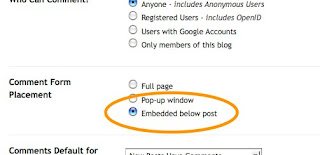"Blogging grew out of recession and blogging will do well during a recession," says Chris Alden, CEO and Chairman of Six Apart, the software company best known for its Movable Type blogging application. Movable Type celebrates its seventh year in October 2008, created by co-founder Mena Trott, an unemployed dotcomer. The application has come a long way from its humble roots as a way for laid-off developers to write about their day. Movable Type software is now used by many mainstream media publications and also by newstream media such as Huffington Post, Talking Points Memo, Kottke.org (and Silicon Valley Watcher).Six Apart: Blogging was Born During a Recession - Interview with CEO Chris Alden
![]() While Wordpress, the competing blogging platform, has taken over the "one man and his blog" market, Six Apart has moved firmly into the commercial world, providing a simple way for any organization to quickly set up a web site with many community features built-in...
While Wordpress, the competing blogging platform, has taken over the "one man and his blog" market, Six Apart has moved firmly into the commercial world, providing a simple way for any organization to quickly set up a web site with many community features built-in...
Motorola Inc.'s new cellphone chief is moving quickly to scale back the struggling division, simplifying the way it makes devices and cutting additional jobs.
Sanjay Jha, who also became Motorola's co-chief executive in August, has decided to focus on Google Inc.'s Android operating system as the software platform for Motorola's showcase phones, according to people familiar with the matter.
Mr. Jha is expected to detail his plans -- which will likely include thousands of layoffs -- as early as Thursday when the company reports earnings, these people said.
The company has announced 10,000 job cuts since early last year. Motorola ...
Will Motorola Go All-In On Android? It Has No Other Choice.
Motorola’s new co-CEO Sanjay Jha has a plan to save the beleaguered mobile handset maker: go all-in on Google’s Android mobile operating system. According to a report in the Wall Street Journal (behind the pay wall):
Sanjay Jha, who also became Motorola’s co-chief executive in August, has decided to focus on Google Inc.’s Android operating system as the software platform for Motorola’s showcase phones, according to people familiar with the matter.
Mr. Jha is expected to detail his plans — which will likely include thousands of layoffs — as early as Thursday when the company reports earnings, these people said.
The rumor is that Motorola will focus all of its efforts around three core operating systems for its phones, with Android becoming the central platform for “mid-tier” phones with Internet capability. The other two operating systems it will support will be Windows Mobile on the high end and its own P2K on the low end. In other words, Android phones will become its bread and butter.
Given this potential strategy, the 350-person Android team that Motorola is recruiting while it considers another massive round of layoffs elsewhere makes more sense. It’s Android-powered social networking phone looks like it will be the first of a long line of Internet-capable phones.
Betting the farm on Android would be a gutsy move, as it is still an unproven operating system. And, as Om points out, it could be too little, too late for Motorola’s cell phone business, which has not turned a profit since late 2006...

 CBS
CBS 
 Google's been the lone hold out among major search engines on RSS but the company quietly enabled feeds for web search results this week. The offering is pretty limited and frustrating, you have to go through
Google's been the lone hold out among major search engines on RSS but the company quietly enabled feeds for web search results this week. The offering is pretty limited and frustrating, you have to go through 













Most sites cache login information as cookies. As long as you visit once every 3 months. The login is there. Further, browsers track userid and password by site.
Is OpenID a solution in search of a problem?
Or is it a trojan horse to share information among websites. If it’s the latter, it invades personal privacy.
Can someone explain this to me?